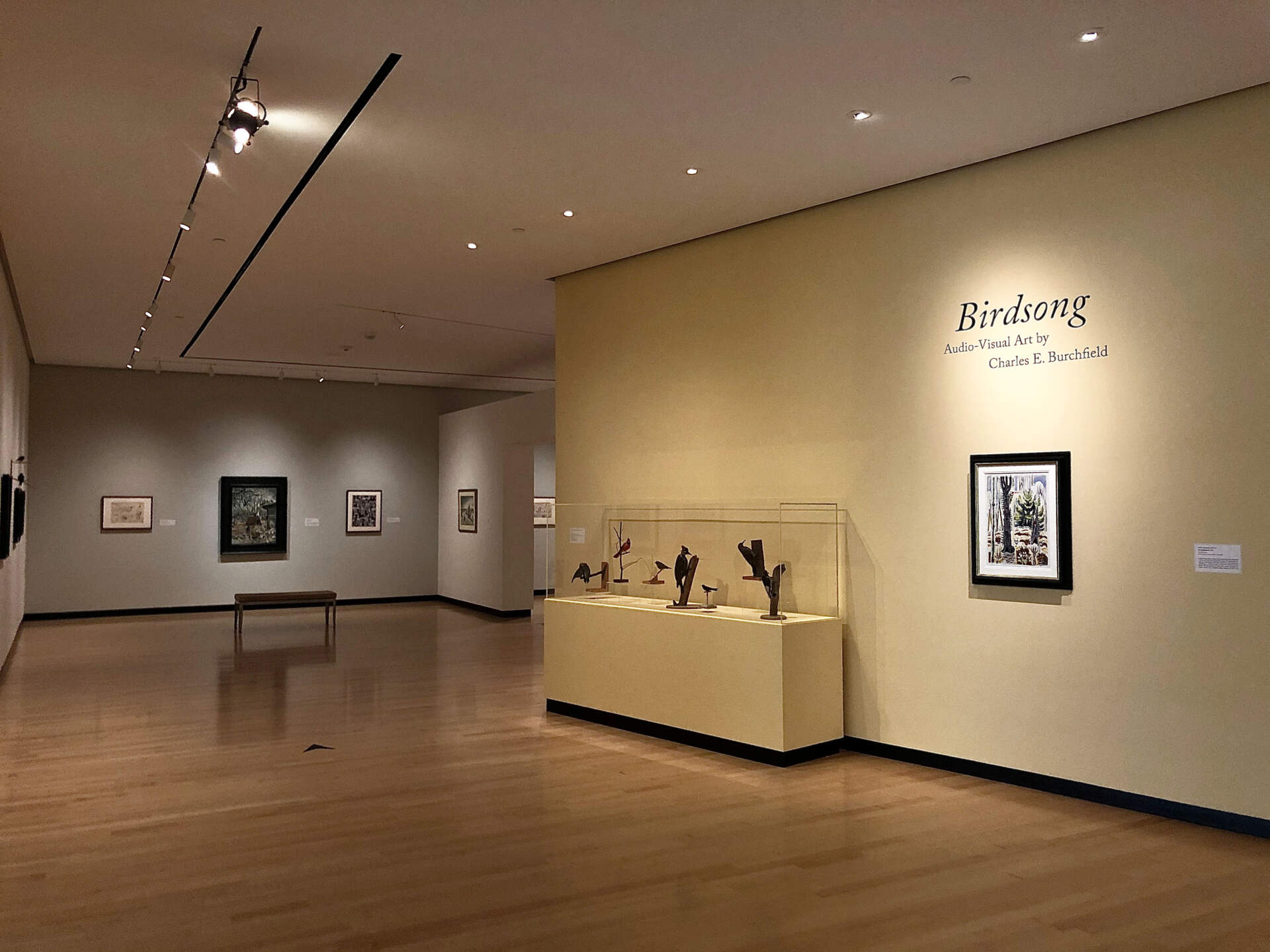
Birdsong: Audio-Visual Art by Charles E. Burchfield
Past
Aug 14, 2020 - Nov 29, 2020
Charles Burchfield loved birds. He delighted in greeting harbingers of spring, camouflaged woodland warblers, and raucous crows, to name just a few. Journal entries recount his sightings as well as birdsongs—especially when they could be heard, but not seen. In all seasons, birds appear as both major subjects and compositional elements of his paintings, drawings, wallpapers, prints, and doodles.
As a teenager Burchfield admired the writings of naturalist John Burroughs and transcendentalist Henry David Thoreau, which shaped his personal philosophy. In following years, he encountered the travel journals of naturalist and environmental preservationist John Muir and ornithologist John James Audubon, with whom he closely identified. This literature, together with his own observations, influenced Burchfield to make birds an essential part of his art repertoire. He depicted them realistically as well as abstractly, and he explored ways to represent their birdsongs in pictorial form.
During a period of uninhibited experimentation in 1917, when Burchfield created “Conventions for Abstract Thoughts” to convey human emotions, he also represented sounds with visual motifs that Burchfield Scholar Nancy Weekly calls “audio-cryptograms.” Having studied Burchfield for decades, Weekly—whose compelling presentations were accepted by members of the American Synesthesia Association—believe that the artist was synesthetic. Synesthesia is a fascinating neurological phenomenon that occurs when a stimulus in one sense (such as hearing) simultaneously evokes a sensation in another sense (like seeing). Literally, the word “synesthesia” means to perceive (esthesia) together (syn)—as defined by Cretien van Campen in The Hidden Sense: Synesthesia in Art and Science (2008). For Burchfield this meant that he perceived and visually translated motifs and colors for the sounds of birds and insects, as well as factory and train whistles, and phrases of musical compositions by Beethoven, Sibelius, and Mozart. Writing poetically about birdsongs from his earliest days of journaling, Burchfield soon incorporated the songs of the tufted titmouse (popularly known as the “Peterbird” for its peter-peter call), and dozens of other birds, including crows, robins, sparrows, cardinals, wood thrushes, blue jays, hawks, goldfinches and many more.
This exhibition, curated by Ms. Weekly, features a variety of media, including paintings and never-before-seen drawings from our collection in which Burchfield studies bird physiology as a naturalist would and experiments with ways to represent each unique birdsong—a visual audio-guide to pay homage to the uplifting sounds of nature. Thanks to the generosity of the Charles E. Burchfield Foundation, the Center has an archive of 24,000 Burchfield studies that provide insight into his working methodology and nature studies. To place Burchfield’s art in context, the exhibition also includes plates from John James Audubon’s double elephant folio of Birds of Americaon loan from the Buffalo & Erie County Public Library and mounted ornithology specimens from the Buffalo Museum of Science. Works from private collections include loans from anonymous lenders; Sascha and Ann Ayad, the James N. Goodman Estate, courtesy of the James Goodman Gallery, Inc.; the Malof Family; Grace Meibohm; and Menconi + Schoelkopf.
Audio representations of several birdsongs are being compiled by Gavin Leighton, Ph.D., Assistant Professor of Biology at SUNY Buffalo State. He is creating bioacoustics with permission of the Macaulay Library that is operated by the Cornell Lab of Ornithology.
Related naturalist programs will enhance the exhibition during its three-month presentation, coordinated by Head of Production John B. Malinowski, Public Programs Manager John M. Smigielski, and the museum’s education department.
Support for the exhibition has been generously provided by Steven Lakomy, MD and Cheryl Lyles.
Explore a self-guided virtual tour of this exhibition here.